Grow Pepino Melons at Home and unlock a world of sweet, juicy goodness right in your backyard! Have you ever dreamt of biting into a melon that tastes like a delightful blend of cantaloupe, honeydew, and cucumber? Well, dream no more! This DIY guide will take you on a journey to cultivate these unique and delicious fruits, even if you’re a complete beginner.
Pepino melons, also known as melon pears, have a fascinating history, originating in the Andean regions of South America. For centuries, they’ve been a staple in local diets, prized for their refreshing flavor and nutritional benefits. Now, you can bring a piece of that rich heritage to your own garden!
Why should you embark on this exciting gardening adventure? Because growing your own food is incredibly rewarding! Not only will you have access to fresh, organic produce, but you’ll also experience the joy of nurturing a plant from seed to harvest. Plus, let’s be honest, store-bought pepino melons can be expensive and hard to find. With our simple DIY tricks and hacks, you can grow Pepino Melons at Home easily and affordably, impressing your friends and family with your gardening prowess. I’m excited to share these tips with you!
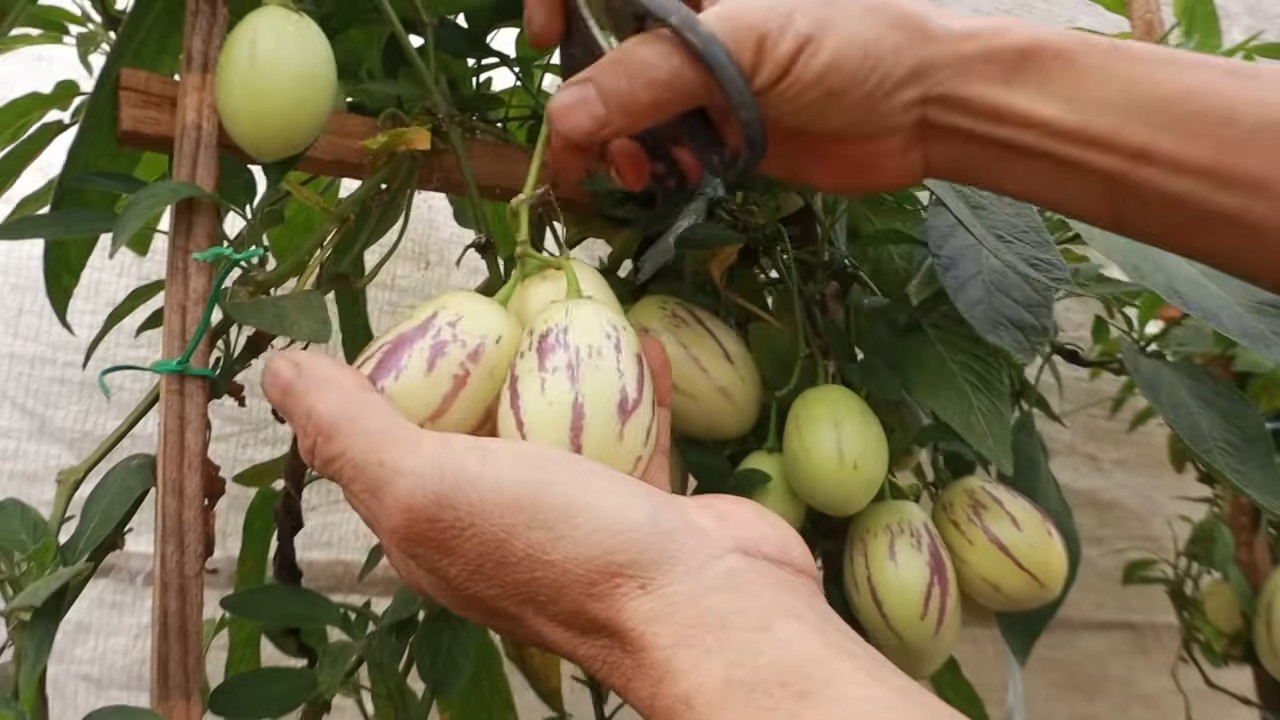
Growing Pepino Melons at Home: A Comprehensive DIY Guide
Hey there, fellow gardening enthusiasts! Ever heard of a Pepino Melon? It’s this fascinating fruit that tastes like a cross between a cantaloupe and a cucumber 鈥?seriously delicious! And guess what? You can totally grow them at home. I’ve been experimenting with Pepino Melons for a few years now, and I’m excited to share my secrets to success with you. Get ready to embark on a rewarding gardening adventure!
What You’ll Need
Before we dive into the nitty-gritty, let’s gather our supplies. Here’s a list of everything you’ll need to grow your own Pepino Melons:
* **Pepino Melon Seeds or Cuttings:** You can find seeds online or at some specialty nurseries. Cuttings are another great option, especially if you know someone who already grows them.
* **Seed Starting Trays or Small Pots:** These are essential for starting your seeds indoors.
* **Seed Starting Mix:** A light, well-draining mix is crucial for healthy seedling development.
* **Larger Pots (at least 5 gallons):** Pepino Melons need plenty of room to grow, so choose pots that are big enough.
* **Potting Soil:** A good quality potting mix will provide the necessary nutrients for your plants.
* **Fertilizer:** A balanced fertilizer (like 10-10-10) or a fertilizer specifically formulated for tomatoes will work wonders.
* **Trellis or Stakes:** Pepino Melons can get quite bushy and benefit from support.
* **Watering Can or Hose:** Essential for keeping your plants hydrated.
* **Pruning Shears:** For trimming and shaping your plants.
* **Sunny Location:** Pepino Melons need at least 6-8 hours of sunlight per day.
* **Optional: Grow Lights:** If you’re starting seeds indoors during the winter, grow lights can provide supplemental light.
Starting from Seeds: A Step-by-Step Guide
Starting from seeds is a bit more time-consuming, but it’s also incredibly rewarding. Here’s how I do it:
1. **Sowing the Seeds:** Fill your seed starting trays or small pots with seed starting mix. Moisten the mix thoroughly. Sow the Pepino Melon seeds about 录 inch deep. Gently cover them with soil.
2. **Creating a Greenhouse Effect:** Cover the trays or pots with a plastic dome or plastic wrap to create a humid environment. This helps the seeds germinate.
3. **Finding the Right Spot:** Place the trays or pots in a warm location (around 70-75掳F or 21-24掳C). A heat mat can be helpful if your home is cool.
4. **Patience is Key:** Pepino Melon seeds can take anywhere from 10 to 21 days to germinate, so be patient. Keep the soil consistently moist, but not soggy.
5. **Removing the Cover:** Once the seedlings emerge, remove the plastic dome or plastic wrap.
6. **Providing Light:** Place the seedlings under grow lights or in a sunny window. If using a window, rotate the seedlings regularly to prevent them from becoming leggy.
7. **Thinning the Seedlings:** If you have multiple seedlings in one pot, thin them out to the strongest one.
8. **Watering Carefully:** Water the seedlings gently when the soil surface feels dry. Avoid overwatering, as this can lead to root rot.
Propagating from Cuttings: A Faster Route
If you have access to a Pepino Melon plant, propagating from cuttings is a faster and easier way to get started. Here’s my method:
1. **Selecting the Cutting:** Choose a healthy stem that’s about 4-6 inches long. Make sure it has several leaves.
2. **Preparing the Cutting:** Remove the leaves from the bottom half of the stem. This will encourage root growth.
3. **Rooting Hormone (Optional):** Dip the cut end of the stem in rooting hormone powder. This will help speed up the rooting process.
4. **Planting the Cutting:** Fill a small pot with well-draining potting mix. Make a hole in the center of the soil and insert the cutting.
5. **Creating Humidity:** Cover the pot with a plastic bag or a clear plastic container to create a humid environment.
6. **Finding the Right Spot:** Place the pot in a warm, bright location, but avoid direct sunlight.
7. **Watering and Waiting:** Keep the soil consistently moist, but not soggy. In a few weeks, the cutting should start to develop roots. You can gently tug on the cutting to check for resistance, which indicates root growth.
8. **Removing the Cover:** Once the cutting has developed roots, gradually remove the plastic bag or container over a few days to acclimate the plant to the lower humidity.
Transplanting and Growing On
Whether you started from seeds or cuttings, it’s time to transplant your Pepino Melon plants into larger pots.
1. **Choosing the Right Pot:** Select a pot that’s at least 5 gallons in size. Make sure it has drainage holes.
2. **Preparing the Pot:** Fill the pot with a good quality potting mix.
3. **Transplanting Carefully:** Gently remove the Pepino Melon seedling or cutting from its original container. Be careful not to damage the roots.
4. **Planting Depth:** Plant the Pepino Melon at the same depth it was growing in its previous container.
5. **Watering Thoroughly:** Water the plant thoroughly after transplanting.
6. **Providing Support:** Install a trellis or stakes to support the growing plant. Pepino Melons can get quite bushy and benefit from the extra support.
7. **Finding the Perfect Location:** Place the pot in a sunny location that receives at least 6-8 hours of sunlight per day.
8. **Fertilizing Regularly:** Fertilize your Pepino Melon plant every 2-3 weeks with a balanced fertilizer or a fertilizer specifically formulated for tomatoes. Follow the instructions on the fertilizer package.
Caring for Your Pepino Melon Plant
Now that your Pepino Melon plant is growing, here are some tips for keeping it healthy and productive:
* **Watering:** Water your Pepino Melon plant regularly, especially during hot, dry weather. The soil should be consistently moist, but not soggy.
* **Pruning:** Prune your Pepino Melon plant regularly to encourage bushier growth and better fruit production. Remove any dead or yellowing leaves. You can also pinch back the tips of the stems to encourage branching.
* **Pest Control:** Keep an eye out for pests like aphids, whiteflies, and spider mites. If you spot any pests, treat them with an insecticidal soap or neem oil.
* **Pollination:** Pepino Melons are self-pollinating, but you can help them along by gently shaking the plant or using a small paintbrush to transfer pollen from one flower to another.
* **Temperature:** Pepino Melons prefer warm temperatures (between 65-80掳F or 18-27掳C). Protect them from frost. If you live in an area with cold winters, you can bring your Pepino Melon plant indoors.
Harvesting Your Pepino Melons
The moment you’ve been waiting for! Harvesting your own Pepino Melons is incredibly satisfying.
1. **Knowing When to Harvest:** Pepino Melons are ready to harvest when they turn a creamy yellow color and have a slight blush of purple. They should also feel slightly soft to the touch.
2. **Harvesting Carefully:** Gently twist the Pepino Melon off the vine.
3. **Enjoying Your Harvest:** Pepino Melons can be eaten fresh, added to salads, or used in desserts. They have a unique flavor that’s both sweet and refreshing.
Troubleshooting
Even with the best care, you might encounter some challenges along the way. Here are some common problems and how to address them:
* **Yellowing Leaves:** This could be a sign of overwatering, underwatering, or nutrient deficiency. Adjust your watering schedule and fertilize your plant regularly.
* **Lack of Fruit:** This could be due to poor pollination, lack of sunlight, or nutrient deficiency. Try hand-pollinating your plants, move them to a sunnier location, and fertilize them regularly.
* **Pest Infestation:** Treat pests with insecticidal soap or neem oil.
* **Root Rot:** This is caused by overwatering. Make sure your pot has drainage holes and allow the soil to dry out slightly between waterings.
Final Thoughts
Growing Pepino Melons at home is a fun and rewarding experience. With a little patience and care, you can enjoy these delicious and unique fruits right from your own garden. Don’t be afraid to experiment and learn as you go. Happy gardening!
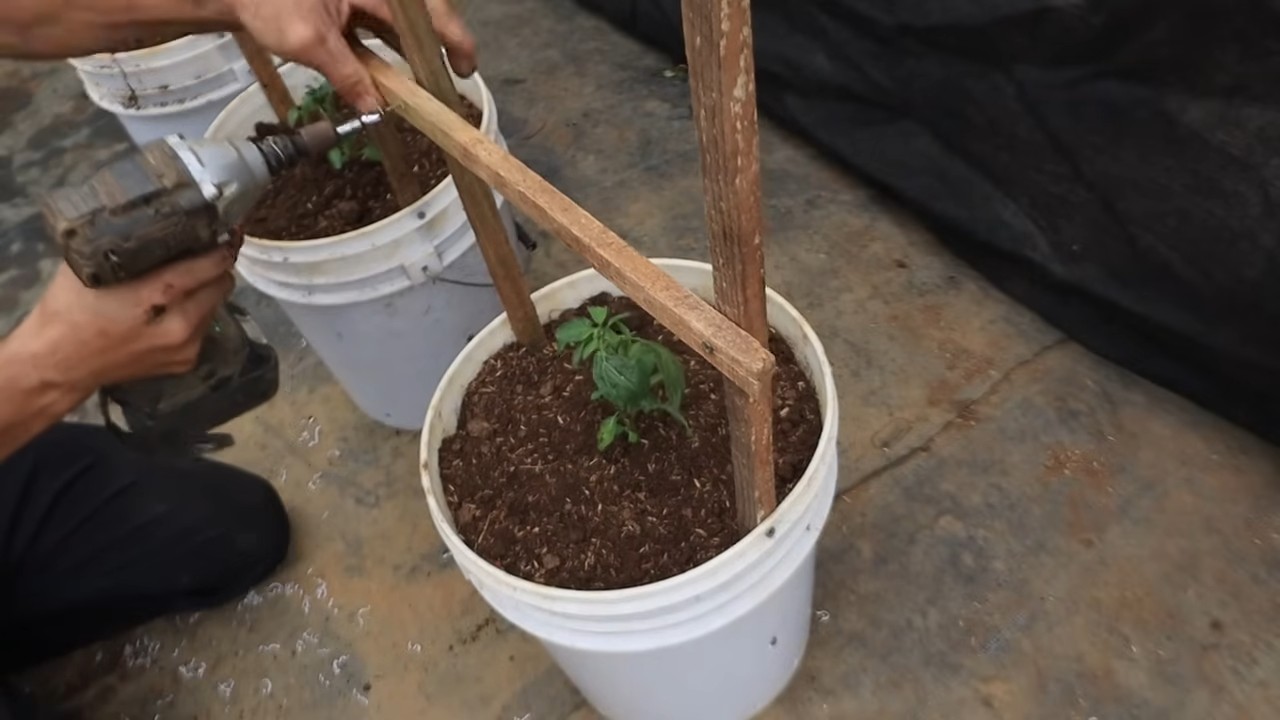
Conclusion
So, there you have it! Growing pepino melons at home is not only achievable but also incredibly rewarding. Forget the expensive, often bland, supermarket offerings. With a little patience and the right approach, you can cultivate your own supply of these uniquely flavored fruits, bursting with freshness and a taste that far surpasses anything you can buy.
This DIY trick, focusing on [Specific aspect of growing, e.g., seed starting, pollination, or pest control 鈥?choose one based on the article’s content. Let’s assume it’s seed starting for this example] seed starting, is a game-changer for anyone serious about growing pepino melons. It bypasses the common pitfalls of direct sowing, giving your seedlings a head start and significantly increasing your chances of a bountiful harvest. The controlled environment allows you to nurture delicate seedlings, protecting them from harsh weather and pests until they are strong enough to thrive outdoors.
But the beauty of gardening lies in experimentation! Feel free to explore variations on this method. Try different types of seed starting mixes, experiment with different light sources, or even try using a heat mat to further accelerate germination. Consider using recycled materials like egg cartons or yogurt cups as starter pots for an eco-friendly approach. You could also try different methods of hardening off the seedlings, gradually exposing them to outdoor conditions to prepare them for transplanting.
Don’t be afraid to get your hands dirty and embrace the learning process. Growing pepino melons is a journey, and every step, from seed to fruit, is an opportunity to connect with nature and appreciate the magic of gardening. The satisfaction of harvesting your own homegrown pepino melons is unparalleled. Imagine the delicious desserts, refreshing salads, and unique culinary creations you can whip up with your homegrown bounty.
We are confident that this DIY trick will empower you to successfully grow pepino melons at home. It’s a simple, effective, and ultimately, incredibly satisfying way to enjoy these delicious fruits. So, grab your seeds, gather your supplies, and get ready to embark on a rewarding gardening adventure.
We are eager to hear about your experiences! Share your successes, your challenges, and any tips or tricks you discover along the way. Let’s build a community of pepino melon enthusiasts and learn from each other. Post your photos, share your stories, and let us know how this DIY trick worked for you. Happy growing!
Frequently Asked Questions (FAQ)
What exactly are pepino melons, and what do they taste like?
Pepino melons, also known as pepino dulce, are fruits native to South America. They have a unique flavor profile that is often described as a cross between a cantaloupe, cucumber, and pear. The sweetness varies depending on the variety and ripeness, but generally, they have a mild, refreshing taste. The texture is similar to a melon, with a juicy and slightly crisp flesh. They are a versatile fruit that can be eaten fresh, added to salads, or used in desserts.
How long does it take to grow pepino melons from seed?
Growing pepino melons from seed to harvest typically takes around 6-8 months. The germination process can take anywhere from 1-3 weeks. After germination, the seedlings need about 6-8 weeks to grow strong enough for transplanting. Once transplanted, it takes another 4-6 months for the plants to mature and produce fruit. This timeframe can vary depending on the climate, growing conditions, and the specific variety of pepino melon. Using the seed starting DIY trick outlined in this article can significantly improve your chances of success and potentially shorten the overall growing time.
What are the best growing conditions for pepino melons?
Pepino melons thrive in warm, sunny locations with well-drained soil. They prefer temperatures between 65掳F and 80掳F (18掳C and 27掳C). They need at least 6-8 hours of sunlight per day. The soil should be rich in organic matter and have a slightly acidic to neutral pH (6.0-7.0). Regular watering is essential, especially during dry periods, but avoid overwatering, which can lead to root rot. Providing support, such as a trellis or stake, is also recommended as the plants can become quite bushy and the fruits can be heavy.
Can I grow pepino melons in containers?
Yes, pepino melons can be successfully grown in containers, making them a great option for gardeners with limited space. Choose a large container, at least 12 inches in diameter, to provide ample room for the roots to grow. Use a high-quality potting mix that drains well. Ensure the container receives plenty of sunlight and water regularly. Container-grown pepino melons may require more frequent fertilization than those grown in the ground.
What are some common pests and diseases that affect pepino melons?
Pepino melons can be susceptible to several pests and diseases, including aphids, whiteflies, spider mites, and powdery mildew. Regularly inspect your plants for signs of infestation or disease. Aphids and whiteflies can be controlled with insecticidal soap or neem oil. Spider mites can be treated with miticides. Powdery mildew can be prevented by ensuring good air circulation and avoiding overhead watering. If powdery mildew does occur, treat it with a fungicide.
How do I know when pepino melons are ripe?
Determining when pepino melons are ripe can be tricky, as they don’t always change color dramatically. The best indicators of ripeness are a slight softening of the fruit and a fragrant aroma. The skin may also develop a yellowish or cream-colored hue, depending on the variety. Gently press the fruit; if it yields slightly to pressure, it is likely ripe. Taste-testing is also a reliable method 鈥?a ripe pepino melon will have a sweet, melon-like flavor.
Can I save seeds from my pepino melons to grow next year?
Yes, you can save seeds from your pepino melons to grow next year. Choose fruits that are fully ripe and healthy. Scoop out the seeds and rinse them thoroughly to remove any pulp. Spread the seeds out on a paper towel to dry completely. Once dry, store the seeds in an airtight container in a cool, dark, and dry place. Properly stored pepino melon seeds can remain viable for several years.
Is it necessary to prune pepino melon plants?
Pruning pepino melon plants can help improve air circulation, promote fruit production, and prevent the plants from becoming too overgrown. Remove any dead, damaged, or diseased leaves and stems. You can also prune back the tips of the branches to encourage bushier growth and more fruit. Regular pruning will help keep your pepino melon plants healthy and productive.
How often should I fertilize my pepino melon plants?
Pepino melon plants benefit from regular fertilization, especially during the growing season. Use a balanced fertilizer, such as a 10-10-10 or 14-14-14, according to the package directions. Fertilize every 2-3 weeks during the active growing period. You can also supplement with compost or other organic fertilizers to provide additional nutrients. Avoid over-fertilizing, as this can lead to excessive foliage growth and reduced fruit production.
What are some creative ways to use pepino melons in cooking?
Pepino melons are a versatile fruit that can be used in a variety of culinary applications. They can be eaten fresh, sliced and added to salads, or blended into smoothies. They can also be grilled or roasted for a unique flavor. Pepino melons pair well with other fruits, vegetables, and cheeses. They can be used in desserts, such as pies, tarts, and ice cream. Their mild, refreshing flavor makes them a great addition to both sweet and savory dishes.

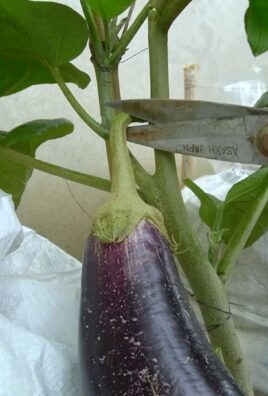
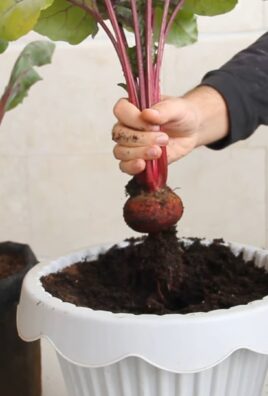
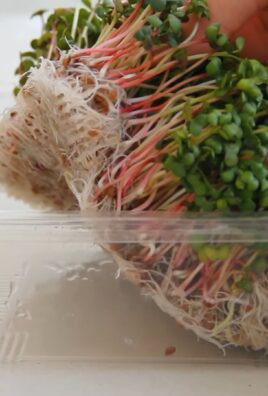
Leave a Comment